|
|
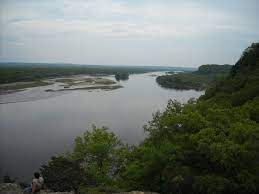
by Elim Eyobed, age 11
Have you ever been to the Wisconsin River? We’ve heard from explorers that it is a good place for boating, fishing, and camping. Other benefits of going to the Wisconsin River are the numerous animal species.
The Wisconsin River is a great resource of food, water, and space for many different species like beavers, otters and fish. It is also a great source of business specifically for Native people, explorers, and fur trappers.
The Wisconsin River has been used as a way of transporting materials like logs for lumber or paper. Logs are floated down the river and sent to Central Wisconsin where they are used for things like building houses. There have also been many dams built along the Wisconsin River, supplying electricity to the rest of the state. The Wisconsin River is a 430 mile long tributary of the Mississippi river.
[read more]
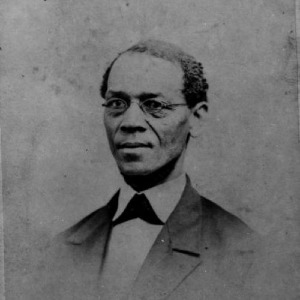
by Melanie Bautista, age 16
Ezekiel Gillespie was a civil rights activist that was known for his accomplishments and his big impact in the African American community in Wisconsin.
Gillespie was born into slavery in 1818 in the state of Tennessee. After he bought his freedom for $800, he moved around the country, eventually moving to Milwaukee, Wisconsin in 1854. There, he focused on challenges faced by the African American community.
Gillespie was active in the Underground Railroad during the Civil War. Gillespie became a messenger for the Milwaukee & St. Paul Railway Company, where he helped escaped slaves travel to northern states, including Wisconsin.
[read more]
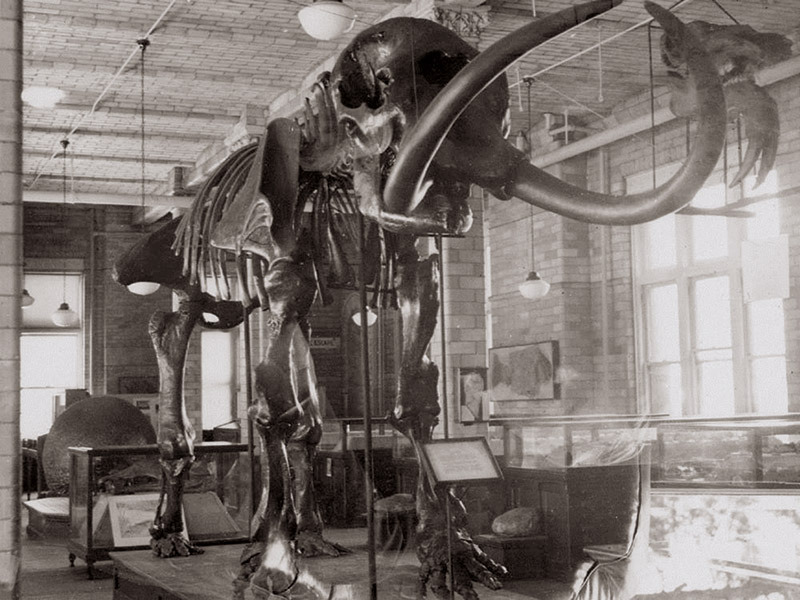
by Anissa Attidekou, age 12
The Boaz mastodon is a fossil of a mastodon discovered near Boaz, Wisconsin in 1897. A mastodon is an elephant but harrier. A spear made of stone found near the Boaz mastodon shows that humans once hunted the mastodon. They lived in North America, Asia, and Africa, during the Ice Age. During the last Ice Age, many giants like the mastodon and mammoth roamed Wisconsin.
The fossil of the great mastodon is on display at the University of Wisconsin Geology Museum in Madison. For a long period of time, the mastodon was thought to be a complete individual, but in 2015 it was discovered after much research that two bones from the so-called Boaz mastodon were conjoined together with bones from a different individual. The University of Wisconsin Geology also found a very old handwritten note stating that this might not be a mastodon at all, but a mammoth. After two long years of research it was clear. The Boaz mastodon was a combination of two different animals.
The Boaz mastodon was named after a small village in Richland County. Where young boys found the fossil of the Boaz mastodon in 1897. It was reassembled by scientists later on in 1915. The Boaz mastodon was later named in honor of the boy's village Boaz Wisconsin.
[read more]

by Desteny Alvarez, age 17
Last summer, Tamara Thomsen, a maritime archaeologist for the Wisconsin Historical Society, and Mallory Dragt discovered a 15-foot-long dugout canoe in Wisconsin’s Lake Mendota. What sets it apart from other sunken boats is its age – the canoe was estimated to be 1,200 years old.
Thomsen and Dragt work together at Divisions Scuba, and they discovered the boat in 27 feet of water near Shorewood Hills while testing some scuba equipment. The canoe was brought to shore by a team of divers near the Spring Harbor Neighborhood. For the next two years, the canoe is set to undergo a series of preservation treatments so it can safely be put on display at the Wisconsin Historical Society’s renovated museum on the Capitol Square.
One of the several treatments will take place at the State Archive Preservation Facility, on the East side of Madison. The canoe will be positioned in a 16-foot-long, 3-foot-wide tank. Inside this tank, aside from water meant to keep the environment of the boat stable, there will be a biocide to ensure there are no microorganisms or algae growing on the wood. Then, a treatment of polyethylene glycol will take the place of water that the wood had soaked up.
[read more]
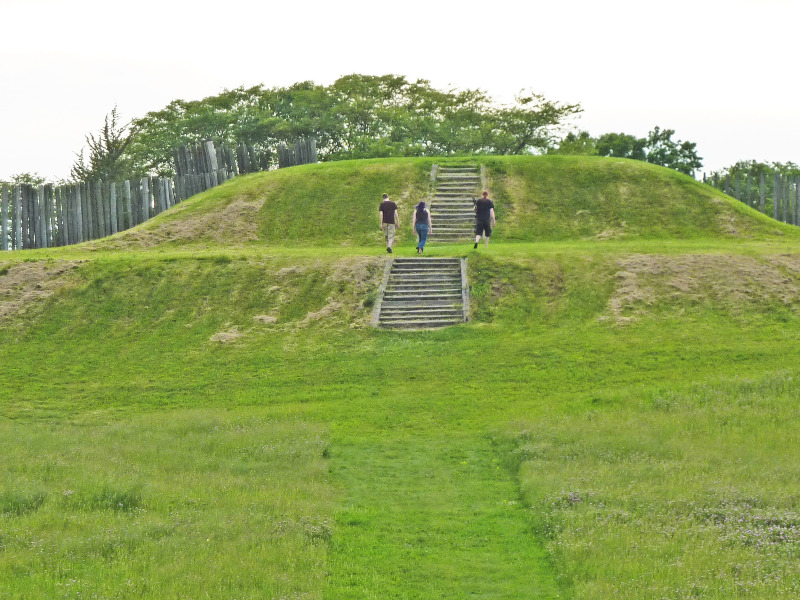
by Eleanor Pleasnick, age 13
Most people know that there are ruins of ancient cities and towns all over the world. Even Wisconsin has them, and Aztalan is one of the most famous ancient sites in our state. Aztalan is also the largest historical site in Wisconsin.
You can find the ancient remains of Aztalan, which is now a Wisconsin State Park, about 30 miles east of Madison and approximately 50 miles west of Milwaukee. This area, now known as the northernmost tip of land that was occupied by the ancient Mississipians, is close to both the small town of Lake Mills and the Crawfish River.
The Middle Mississippian people originally migrated to Aztalan around 1100 A.D. Archeologists have found many cultural remains in the area. By studying the evidence, archeologists believe that people migrated to Aztalan from a large Mississippian city called Cahokia, located in an area that is now Illinois. The remains at Cahokia and at Aztalan show many similarities, which has led archaeologists to make this connection.
[read more]

by Max Moreno, age 9
It is challenging to think about what life was like a thousand years ago. However, how about thinking all the way back to 10,000 years ago, when Wisconsin Natives were constructing living areas, tools, and mounds.
As time went on, people from different regions began to settle in what is now known as Wisconsin. For example, native groups from the Mississippi area traveled up the Mississippi River to reach Wisconsin. They planted gardens and began to set up living areas, growing crops such as corn and beans.
These early people in Wisconsin also were forming communities, and establishing rules and traditions that were shared from one family generation to another.
[read more]
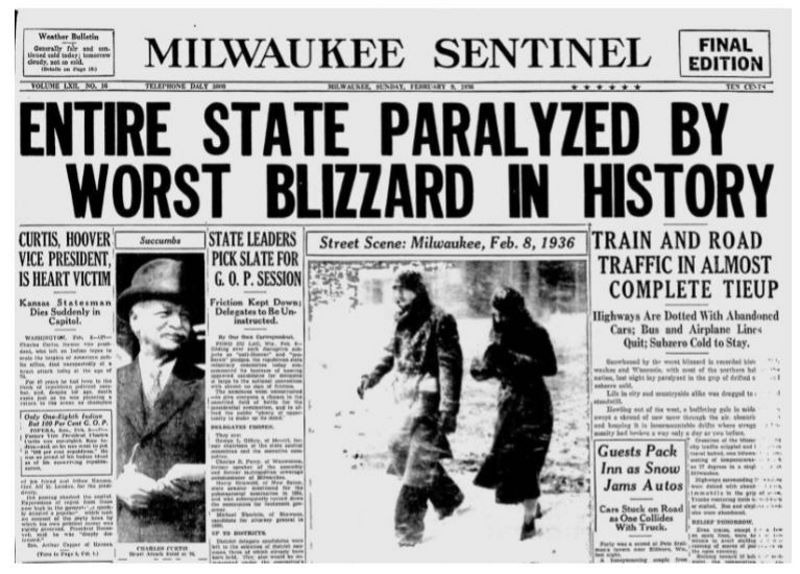
by Daniel Li, age 14
Although many people have a very loose definitions of a blizzard, the official classification requires the storm to last for longer than three hours with winds of at least 35 miles per hour.
Light blizzards are merely just a part of the weather in many places. Today, if you’re stuck in traffic, you can turn on the heat and listen to the radio, or if you’re at home, you can watch TV, read a book and just relax. But back in the 1800s and early 1900s, these luxuries didn’t exist. There were no government services to assist people in need, and if you hadn’t stocked up on food, chances were you would go hungry. Houses were many times eaten by animals, destroying insulation and roofing.
Having your house eaten is always bad news, but more so in colder areas such as Wisconsin – one of the coldest states on average in the US. The record low was -55 degrees Fahrenheit in 1996, in Couderay (15 years prior, Couderay hit 53 degrees below). The lowest recorded temperature in the United States was just 15 degrees lower, at -70 degrees Fahrenheit. Current daily averages in the winter are seldom above 30 degrees Fahrenheit, while lows can be well in the negatives. In Lancaster, throughout February 7th and 12th of 1899, the average daily high temperature was negative 5.7 degrees and the average low was negative 24.7. To put that in perspective, the coldest Wisconsin has been in the past 10 years has been -29 degrees Fahrenheit, while California and Florida’s lowest was just 37 and 28 respectively.
[read more]
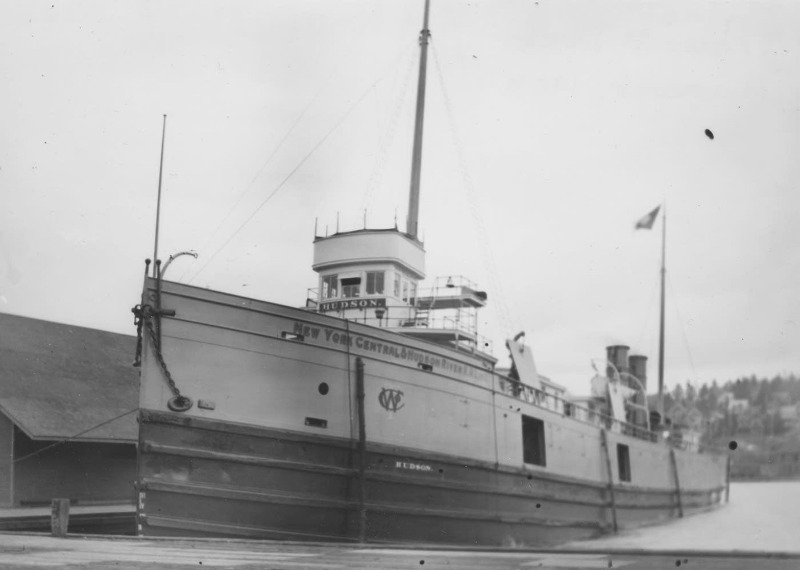
by Jules Da Costa, age 13
There’s something about stories of shipwrecks that appeals to the adventurous spirit in all of us. Jerry Eliason and Kraig Smith are actual shipwreck hunters who uncover and investigate the many shipwrecks that have occurred in Lake Superior, one of the five Great Lakes, located on the northern edge of Wisconsin.
Smith and Eliason have been involved with numerous shipwreck discoveries for years. One of the shipwrecks they found was the 288-foot-long Hudson, built in 1888. On September 15, 1901 the Hudson was carrying a load of wheat and flax. At one point in its journey, soon after it passed the Apostle Islands, a gale kicked up. The next day lighthouse keepers close to the ship claimed they saw a “sizeable twin-stacked steamer dead in the water, listing badly. The unidentified steamer suddenly rolled over and sank.”
Three days later, on September 18, 1901 the News Tribune reported there was no clue as to where the ship was. On the next day, the newspaper reported that because there was no sign of wreckage, the report that the ship sank was probably a mistake. But on September 20, news reports made it clear that there had been no mistake. A fishing boat had found wreckage matching the Hudson. Over the course of the next few days, more wreckage turned up, including bodies of the crew.
[read more]
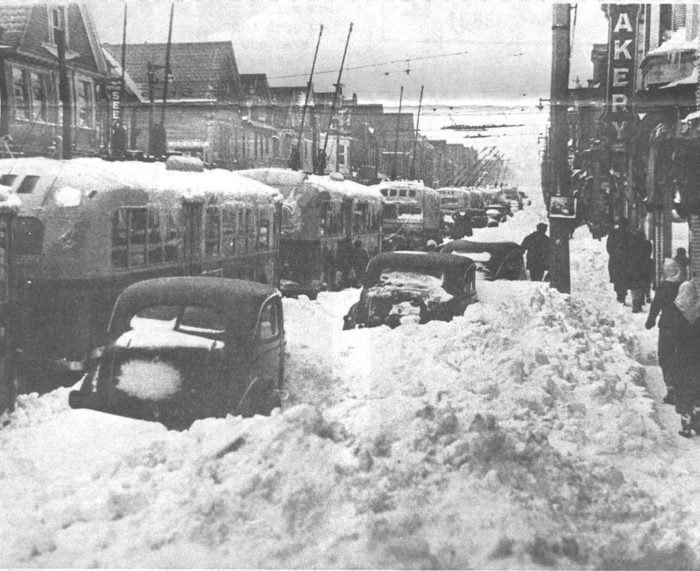
by Theodore B. Morrison, age 14
Anyone who lives in the northern Midwest has experienced his or her fair share of snowstorms. These snowstorms though, do not compare to the Armistice Day Blizzard, one of the most devastating natural disasters in Wisconsin’s history.
The name originates from the storm which occurred on Armistice Day, now known as Veterans Day, a day that celebrated the end of World War I and a new period of peace. However, this blizzard was anything but peaceful.
The Armistice Day Blizzard on November 11 and 12, 1940 caused a drastic drop in temperature that resulted in more than 150 deaths in Wisconsin. The blizzard formed when cold northern air combined with warm moisture from the Gulf Coast, which created a sudden drop in air pressure. The storm generated winds up to 80 MPH, creating 20-foot snowdrifts, laying down a foot of snow, and conditions similar to those of a hurricane.
[read more]
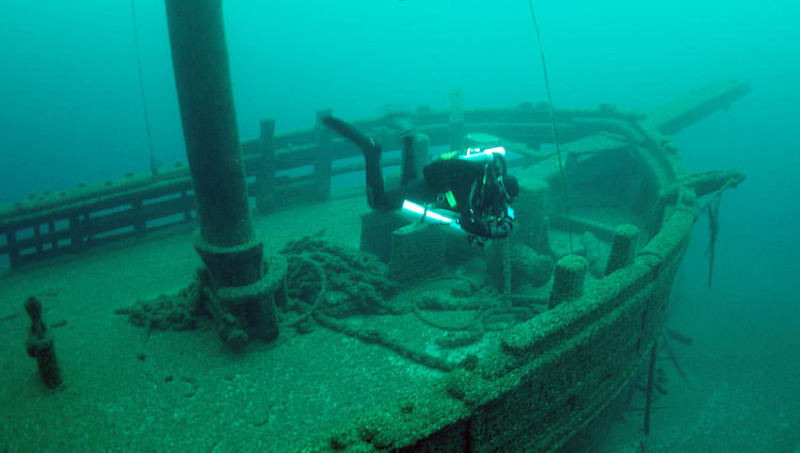
by Dyami Rodriguez, age 16
The National Oceanographic and Atmospheric Administration (NOAA) named Lake Michigan’s Wisconsin Shipwreck Coast a National Maritime Sanctuary in 2021, six years after its nomination by local communities. A new addition to the National Marine Sanctuary System, Wisconsin’s Shipwreck Coast became the second sanctuary in the Great Lakes and third freshwater sanctuary.
The Wisconsin Sanctuary has more shipwrecks listed on the National Historic Register than any other state including 36 shipwrecks and 59 suspected wrecks. This is caused due to dangerous weather conditions. The cold temperatures of Wisconsin’s coastal waters preserve the history represented by these ships allowing drivers to explore what's inside.
One of these shipwrecks is the
Home
, built in 1843 and sunk in 1858 which transported lumber, general merchandise, and grain to Lake Erie and the upper lakes. Another ship discovered in the sanctuary was the “Christmas Tree Ship” or
Rouse Simmons
, carrying Christmas trees to Port Chicago built in 1868 and sunk in 1912.
[read more]
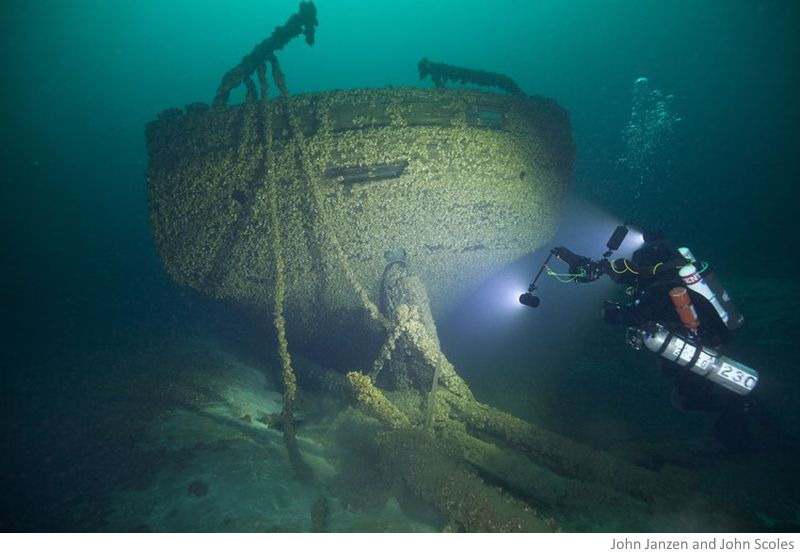
by Jeremiah Warren, age 11
Can you imagine diving in a lake and finding a shipwreck? It’s estimated that there are 6,000 shipwrecks in the bottom of the great lakes. Bernie Hellstrom, a diver, was one who found two ships – Peshtigo and St. Andrews – in the depths of Lake Michigan. Both of these ships collided more than 140 years ago.
It is believed that these ships sank in 1878 in the east of the Straits of Mackinac in Lake Huron, but only the Peshtigo ship was found in the accident. St. Andrews' ship was not found until recently.
The Peshtigo ship was 161 feet long, it was used to carry and transport coal to other areas. The St. Andrews' ship was 143 feet long and was used for carrying corn.
[read more]
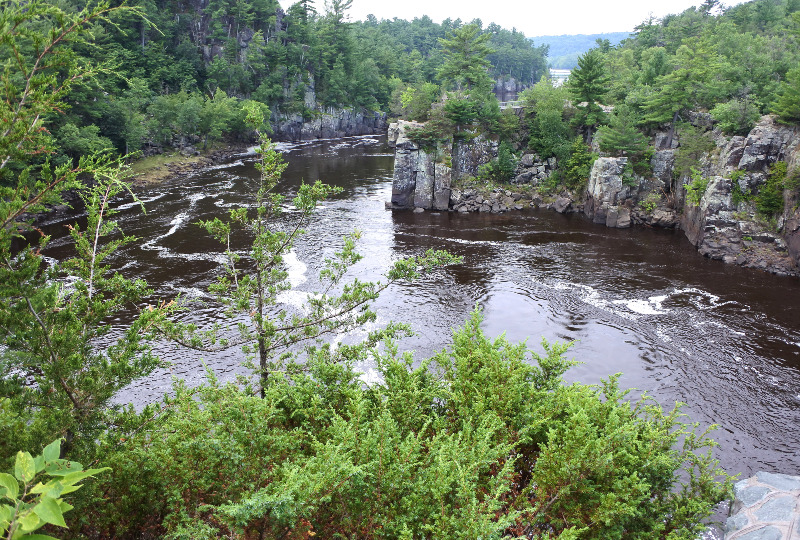
by Leilani McNeal, age 16
1.1 billion years ago, a mysterious rift, ranging from the depths of Lake Superior to present-day Iowa appeared. From the cracks of this rift, came oozing lava, hardening into a substance known as basalt. Over the next 500 million years, these natural occurrences worked in tandem with one another to support a sea of water which floored the entirety of this dark, gray material. The deposition of sand and silt from the sea led to the creation of sandstone and shale. Increased global temperatures promoted the shift of myriad glaciers across the state of Wisconsin, carving out the area’s famous potholes that are widely recognized today as the St. Croix Dalles.
As plans to build city roads using crushed rock from the Dalles emerged in the mid 1800s, general public concern rose. From a young age, George Hazzard had developed a profound appreciation for the Dalles. His work as a railroad agent further deepened his love for this area, which prompted him to organize a movement in hopes of preserving the flora and fauna of the St. Croix Dalles.
[read more]

by Dyami Rodriguez, age 16
On August 24th 1970, a bomb went off outside Sterling Hall at the University of Wisconsin-Madison. As a result of the attack, a university researcher was killed and others were injured. The cost of the bombing was 6 million dollars and years worth of research.
The people behind the bombing were a group called “The New Year’s Gang.” The group consisted of four people: David Fine, Leo Burt, Dwight Armstrong, and Karl Armstrong. The bomb attack on Sterling Hall occurred in the context of protests against the Vietnam war.
Members of The New Year’s Gang believed that research at UW-Madison’s Army Math Research Center was supporting the U.S. war effort and that this research helped kill innocent people in Southeast Asia. Many of the group’s ideas stemmed from the Anti-war Movement that took place during the 1960s and 70s.
[read more]
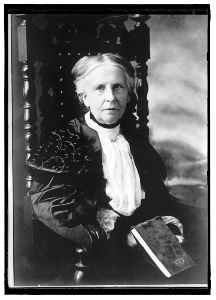
by Devika Pal, age 16
Olympia Brown, a leader in the women's suffrage movement, was born on January 15th, 1835, in Prairie Ronde, Michigan. She was raised in a home where education was vital and she was the oldest of four children. Her dad built a schoolhouse in order for his children to receive an education.
Brown convinced her father to let her attend college. In 1860, she graduated from Antioch College in Yellow Springs, Ohio, with a Bachelor of Arts. She was one of the few women who graduated at that time. Two years later, in 1862, she went on to graduate from the St. Lawrence University in Canton, New York, and became the first woman to graduate from the theological school.
Brown’s family commitment to the Universalist Church greatly impacted her life growing up. In 1863, she became the first woman to be ordained as a minister, despite the lack of support from the church. In the coming years, Brown’s involvement in the women’s suffrage movement grew. She worked with Susan B. Anthony, Lucy Stone, and other suffragists.
[read more]

by Sandy Flores-Ruiz, age 15
Joseph McCarthy was one of the most controversial politicians in American history. He served as a Republican Senator from Wisconsin, from when he was first elected in 1947 until his death in 1957. He is known for declaring that communist spies and sympathizers had penetrated the U.S. federal government and for launching anti-communist investigations that polarized the country.
The events that took place after World War II convinced many Americans that the “Red menace” was real. For example, in 1949, the Soviet Union detonated its first atomic bomb. In the same year, communists declared victory in the Chinese Civil War. And in 1950, Soviet-backed forces in North Korea invaded their pro-Western neighbors in the South starting the bitter Korean War. The United States quickly joined the fight on the side of the South Koreans.
In the late 1940s and early 1950s, the prospect of communist subversion at home and in other places around the world caused concern for many in the U.S. The fear of communism corroded the political culture, creating a lack of trust among Americans. Joe McCarthy was seen by many Americans as a savior during this “Red Scare''. He spent most of his time trying to expose communists and other left-wing loyalists within the U.S. government. Few people dared to speak out against McCarthy because his accusations were so intimidating. For those who did criticize McCarthy, the consequences were often dire. He would dramatically denounce them and accuse that person of being a communist. Jobs were lost and reputations were ruined.
[read more]
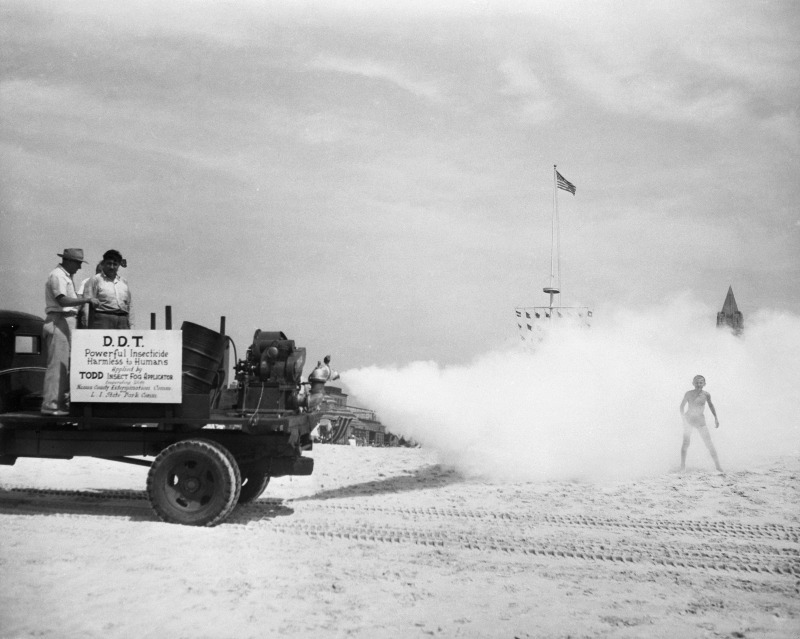
by Alan Cruz, age 17
The discovery of Dichlorodiphenyltrichloroethane (DDT) led to its wide use as a pesticide in the 1940s and 50s. This successful scientific advancement, however, came with unintended consequences.
DDT was created in the 1940s as a modern synthetic pesticide. At first it proved to be effective in both military and civilian populations to treat malaria, typhus, and other insect-borne human illnesses. It was also successful in controlling insects in agriculture and animal production, as well as in institutions, houses, and gardens. In Wisconsin, the pesticide was sprayed on trees in the city of Milwaukee to combat Dutch elm disease. Due to its affordability and effectiveness, there was widespread use of DDT in the United States. Over 2 million pounds of the pesticide were produced every month by the mid-1940s.
But the long-term effects of DDT were not yet fully understood and for years negative environmental impacts were overlooked. The chemical appeared to be such a promising product that the chemist who discovered DDT was awarded a Nobel Prize in medicine. It wasn’t until years later that several environmentalists and scientists began to call out the toxicological effects of broad DDT usage in the country. People who were concerned by the chemical’s effects discovered that because it remained in the environment for a long time, DDT was able to accumulate in the fat cells of animals and humans. Surprisingly, Wisconsin became a focal point of the DDT issue as more individuals advocated for its ban.
[read more]
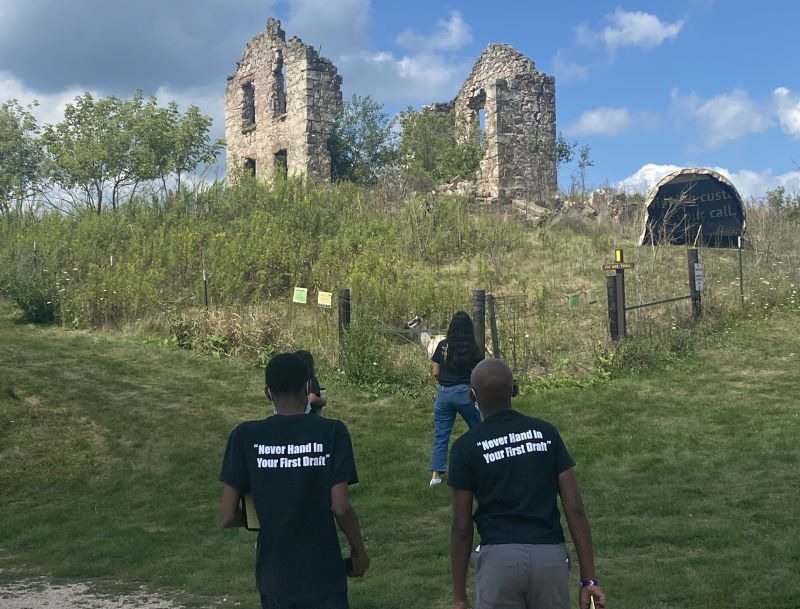
by Desteny Alvarez, age 16
The historic Matz Farmhouse is located in the
Halfway Prairie Wildlife Area
, across the road from Indian Lake County Park in the Town of Berry in Dane County. A visit to Indian Lake County Park isn’t complete without stopping to view this landmark. History comes alive here and it’s easy to imagine what life was like for the pioneer homesteaders who settled in the area during the 1850s and 1860s.
Friedrich Matz, an immigrant from Germany, established the family farm at this site in 1852. Near the ruins of the farmhouse is a stone barn, which is in much better shape than the house itself. This structure looked to us like it would last a long time. The barn, like the house, was built by hand using local stone.
Dane County’s Indian Lake County Park and the Matz Farmhouse ruins are located on Wisconsin Highway 19, about two miles west of Highway 12. When visiting, we suggest taking time to read the historical marker located here. Across the road from these fascinating stone remnants are the main areas of Indian Lake County Park, which offer facilities and amenities for visitors.
[read more]

by Josepha Da Costa, age 15
Reggie White is one of the best professional football players in the history of the National Football League. Because he was also a passionate Christian, he was known in Wisconsin as the “Minister of Defense.” Reggie White was a committed and generous benefactor for his communities. He lifted up the reputation of the Green Bay Packers and helped create free agency as we know it today.
Reggie White’s football journey started at the University of Tennessee, where he was recognized as an All-American player during his senior year of college. He became well-known for his outstanding play for the Philadelphia Eagles from 1985 to 1992, as well as helping to set in place true free agency for his fellow athletes.
Before free agency was created, players could only leave a team when the coaches were done with them and they were told to leave. In 1992, Reggie White and a group of players sued the National Football League for its “restricted free agency” system, which courts found disregarded antitrust laws. The players won the case and the NFL finally established complete free agency. Those policies remain in place today.
[read more]
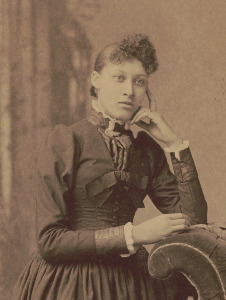
by Kadjata Bah, age 15
Described as a “majestic” and “luminous” journalist, Lillian Parker Thomas Fox is one of many Black women who were pioneers in the field of journalism during the 19th century. Publishing her sharp and poignant writing across the Midwest, Fox aspired to direct “human thought forward.”
Born in Chicago, Fox moved to Oshkosh, Wisconsin with her family soon after her birth in 1854. She was known to be an avid reader and devoted student until her studies ended abruptly during her third year of high school when she became engaged and married.
Nonetheless, Fox continued her intellectual pursuits. She wrote many articles for Wisconsin’s Black press, one of which fiercely called out American hypocrisy after the repeal of the Civil Rights Act of 1875. Fox wrote “You pity England with her Lords and Commons; Russia with its Czar and subjects, and yet practically acknowledge that you have a people among you of American birth whom you consider by God created for your servants, your inferiors by nature rather than by condition.”
[read more]
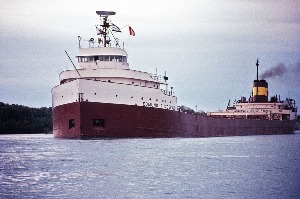
by Alan Cruz, age 14
The S.S. Edmund Fitzgerald was one of the largest ships to ever roam North America's Great Lakes. It is also one of the most famous, and is widely known for its mysterious disappearance. The Fitzgerald is the largest ship to sink on Lake Superior.
November is one of the most dangerous months to sail on the Great Lakes. Frequent storms and strong winds can cause the huge lake to turn deadly. One of these deadly storms caught up to the Edmund Fitzgerald on November 10, 1975.
The ship was owned by Northwestern Mutual Insurance Company and built by Great Lakes Engineering Works in 1957 at a staggering cost of 8.4 million dollars, making it the most expensive ship to be built at that time. While the company was well known for investing money in many mineral and iron industries, Northwestern Mutual became the first American insurance company to build its own ship. The ship made its first voyage on September 24, 1958. Big cargo ships on the Great Lakes, like the Fitzgerald, were nicknamed “lakers”. Lakers transported massive amounts of salts, rocks, and grain. The Fitz generally carried taconite, a low-grade iron ore, and hauled the pellets from mines in Minnesota to steel mills near Detroit and Toledo, Ohio.
[read more]
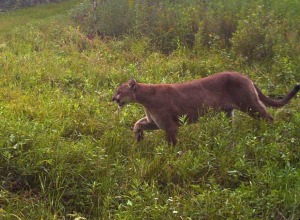
by Virginia Quach, age 17
Throughout recent years, cougar sightings in Wisconsin have occurred in over 17 different locations, suggesting that the feline is returning to Wisconsin’s landscape after more than a century gone.
In Brookfield, Wisconsin, a 50-pound cougar was spotted at the residence of Dan and Bridget Guerndt, where it was caught on surveillance peeking through a window; similarly, in Colgate, Washington County, a cougar was filmed roaming outside a home. Following these incidents, another resident spotted a cougar sitting under her pine tree, prompting her to contact local officials, where Agents of the Wisconsin Department of Natural Resources (DNR) later confirmed the cougar sightings and agreed to handle the situation immediately. However, by the time the DNR intervened, the cougar, which was identified to be a wandering one-and-a-half-year-old male, had disappeared.
From studies by the DNR, male cougars are shown to disperse farther than females, partly explaining why more male cougars have appeared in the Wisconsin area recently. Over the past six months, cougar appearances have drastically increased with at least two cougar sightings per year since 2008 in 17 different locations. Wildlife biologists predict that at least two cougars are currently roaming Wisconsin, perhaps more.
[read more]
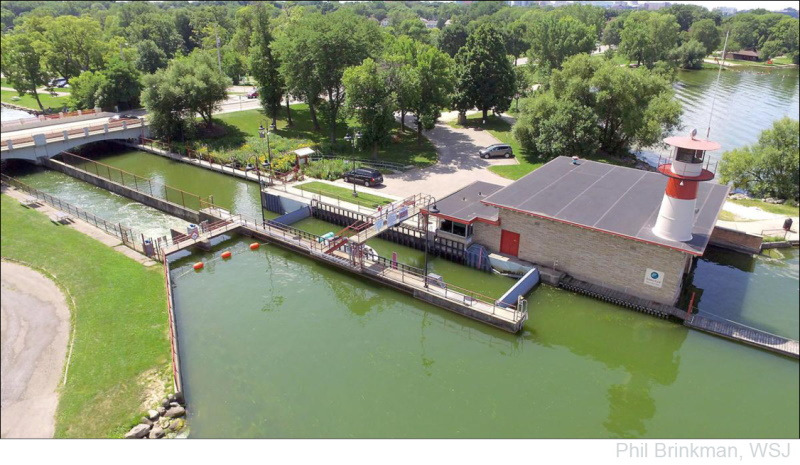
by Desteny Alvarez, age 15
The Tenney Park Lock and Dam is located on the eastern shore of Lake Mendota along Sherman Avenue. It is between the City of Madison’s Filene Park and Tenney Beach. It is the largest of three boat locks on the Yahara River.
The first dam near this location was built in 1847 as a mill and brewery. It was subsequently destroyed in 1866 by a severe thunderstorm. The city bought the current site in 1896 and also made the first lock. They remodeled the lock to allow shallow drafting boats to move between Lake Mendota and Lake Monona through a channel of the Yahara River.
Years later, in 1958, the locks and the dam were rebuilt to provide safety improvements and better navigational access between Madison’s two largest lakes. These improvements helped control the water levels of both lakes.
[read more]
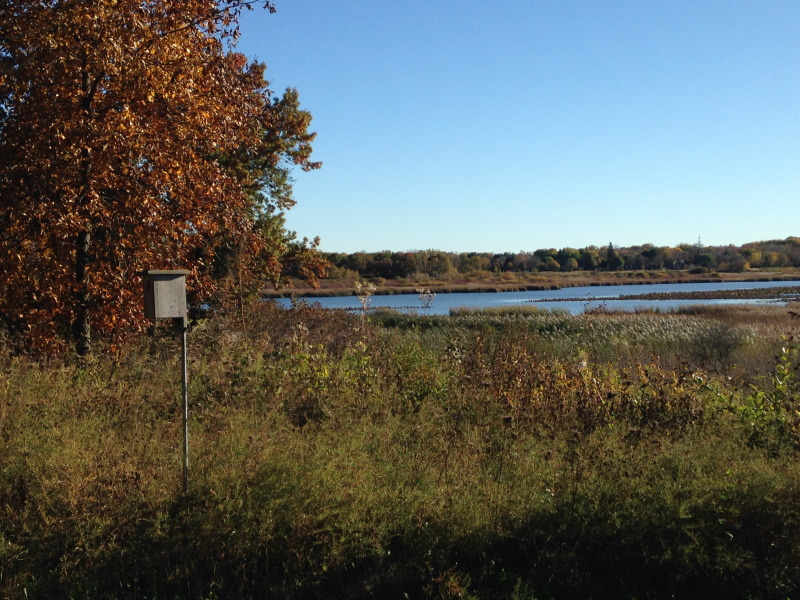
by Mariama Bah, age 13
Cherokee Marsh is home to a variety of flora and fauna that thrive in this unique and significant ecosystem. The marsh is also a very important part of Dane County’s natural environment.
Trees are especially scarce in marshes. Instead, these wetlands boast an abundance of herbaceous plants. Common plants at Cherokee Marsh include cattails, sago pondweed, and hard stem bulrush. This site also supports several rare plant species such as glade mallow, white ladyslipper, and tufted bulrush. Many mammals, reptiles, birds, and amphibians live in the marsh.
The animals and plants that thrive in Cherokee Marsh are a part of a precise and very special ecosystem. There are some invasive species, however, that threaten the native species at the Cherokee Marsh site. The Dane County Land and Water Resources Department (LWRD) has taken efforts to remove carp, which cause destruction by uprooting the aquatic plants and sediment.
[read more]
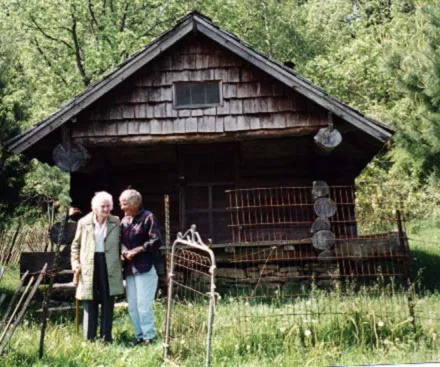
by Zainab Yahiaoui, age 15
Donald Park in the southern part of Dane County is one of the most beloved natural areas in Wisconsin. But this beautiful place wouldn't be possible without the help of two visionary women, who not only donated the land but worked tirelessly to make it available to the public.
The women established the 800-acre park in 1993. It is not just a fun place to enjoy outdoor activities, but it also holds a lot of history and memories. Some ancient artifacts dated back 13,000 years ago, have been located at Donald Park.
Delma Donald Woodburn contributed the most land that eventually became Donald County Park. Born in 1899, she spent most of her childhood living with her grandparents on their farm. Her family said she was a tomboy, who enjoyed activities like playing outside and spending time in nature. Delma’s household was politically active. Her father played many roles in government in his lifetime, and her mother participated in progressive causes. In 1920, she voted in the first election that permitted women to participate.
[read more]

by Gabby Shell, age 14
When you think of Rosie the Riveter, the first image that likely comes to mind is a woman with her hair pulled back in a bandana, flexing her muscles, and saying “We Can Do It!” However, this version of Rosie the Riveter, painted by J. Howard Miller, was only on display for two weeks, and few people saw it at the time. On the other hand, Norman Rockwell’s version was printed on the cover of the May 1943 edition of the
Saturday Evening Post
and was seen and shared by millions.
Today, Miller’s version of Rosie is very well known, having been used by many celebrities and politicians as a way to empower women and say women could do whatever they wanted. This was probably not, however, what the artist intended when creating this piece. The “We Can Do It” slogan was originally meant to refer to the United States winning World War II, not about women joining the workforce, which was something many people were uneasy about back then.
World War II was a total war, meaning that although it was mainly fought overseas, it affected the homeland and civilians significantly. During the war, many women had to step up to help support the troops, either by collecting scrap metals, buying war bonds, or perhaps most importantly, joining the workforce. Women around the nation assumed jobs that belonged to men before the war.
[read more]

by Kadjata Bah, age 15
Wisconsin housing rights champion, Vel Phillips, took on many firsts as a Black woman in Milwaukee.
Coming out of the University of Wisconsin-Madison law school as the first Black woman to graduate, Phillips went on to pursue a career in local and state government. With the struggles of women and Black people in mind, she first began as a lawyer and activist, later becoming the first Black person and first female alderperson elected to the Milwaukee Common Council in 1956.
In her time as an alderwoman, she prioritized issues around housing in Milwaukee, introducing a fair housing bill that was struck down by her white male colleagues four times. Phillips then teamed up with the Milwaukee NAACP Youth Council and Reverend James Groppi in 1967, staging rallies and marches in the city.
[read more]
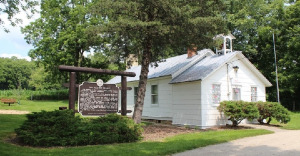
by Virginia Quach
Located in Mazomanie, Wisconsin at the intersection of Highway F and Highway 19 is Dane County’s oldest rural elementary school: Halfway Prairie School. From 1844 to 1961, Halfway Prairie School operated as a one room schoolhouse. It was not until 1964 that it became a part of the county park.
Prior to becoming a historical site, Halfway Prairie School opened each day at 9:00 am and was home to a small group of 25 students from first to eighth grade. Cleo Brockman was one the last teachers at the school. She took on the roles of teacher, nurse, and principle. There, she taught every subject, from math, writing and reading to science and physical education. The school environment was constantly supportive. Older students engaged with younger children and assisted them in different lessons and activities. Today, Halfway Prairie School remains as a memorable learning site for modern students. Though the school and its surrounding area are lesser known compared to some Wisconsin sites, Dane County has exciting future plans for the area.
According to County Executive Joe Parisi, Dane County recently made land purchases encompassing 74 acres around Halfway Prairie School County Park. This area surrounds the elementary school, one of the county’s historical sites.
[read more]
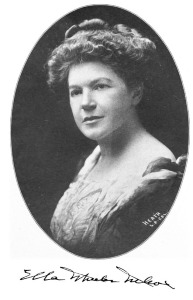
by Leila Fletcher, age 17
Society in the latter half of the 19th century held the rigid expectation that women limit their activities and aspirations to housework and raising a family. These expectations were present for, yet irrelevant to, Wisconsin’s most famous poet, Ella Wheeler Wilcox.
Ella Wheeler was born to an artistic family on November 5, 1850, in Johnstown, Wisconsin. The family excelled in both music and writing; Ella’s brother, Marcus Wheeler, published articles in the Wisconsin State Journal. Despite their inclination for the arts, they were a farming family, even though farming was not their strong suit. In order to try their luck in a different area, they moved and settled down in Westport, just north of Madison, when Ella was 18 months old.
During Ella’s childhood, her family let her develop her artistic side by writing poetry instead of focusing on domestic chores. Her interests went against the norms of society, especially those of her neighbors. However, she did not let their opinions influence her actions. Ella finished her first novel at age ten, and she based her protagonist on her friend, Anne Fields, a fellow rebel. A few years after her writing debut, Ella decided to try a new platform for her work. She secretly made an agreement with the New York Mercury. She was given a free subscription, much to the surprise of her family, in exchange for her articles.
[read more]

by Desteny Alvarez, age 15
What does Wisconsin have to do with the Civil War? It turns out, quite a bit.
The Civil War started because the southern states, called the Confederacy, hoped to form their own country with their own laws. Specifically, they wanted to continue using slaves. The northern states, called the Union, wanted to keep all the states together and abolish slavery, a principle backed by President Lincoln. On April 12, 1861, the Confederate army attacked the Union army. This started the Civil War.
Wisconsin supported President Lincoln’s idea of helping the US stay together. Many men from Wisconsin volunteered to join the Union Army. The state fairgrounds in Madison were used as a camp to train the soldiers. The training camp was named Camp Randall in honor of Alexander Randall, the governor at the time. A soldier would usually go complete their basic military training at Camp Randall, before going to fight in the war. By 1864, Camp Randall became Wisconsin’s largest training camp for soldiers.
[read more]

by Eowyn Gomez Cruz, age 14
After the Mississippians settled in Wisconsin, other groups of Indians began living in Wisconsin. Between 1000 AD and 1630 AD, a group of Indians that the archaeologists called Oneota lived along the Waupaca River. They were the ancestors of the Ho-Chunk and other Indian nations.
The Oneota settled in large villages in southern Wisconsin. They often lived near large bodies of water, such as the Mississippi River and Lake Michigan, but also lived next to smaller rivers. The Dombrowski Site is one of several small Oneota villages found along the Waupaca River in Portage County in the Central Plain. They were excellent farmers: cultivating corn, beans, and squash. The three vegetables were named the “three sisters” by many Native Americans. The “three sisters” grew well together and made for a well-balanced diet.
The Oneota built houses different from the Mississippians. Some houses at the Dombrowski Site and other places could hold only one family. Big families would fit in longhouses that the Oneota also built.
[read more]
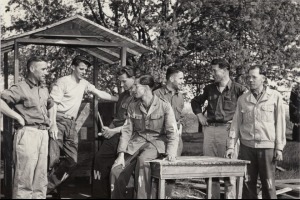
by Devika Pal, age 13
In 1942, a rumor spread around England that Hitler was planning to initiate an airdrop of weapons into the prison camps to bring back Nazi prisoners of war (POWs). Hearing the rumors, England became worried and asked America to house their prisoners. America reluctantly agreed and the Germans, Japanese and Koreans POWs were sent to work in America on empty supply ships known as Liberty Ships.
POWs were first sent to work in military camps, but then the Army realized that prisoners could pay for their keep if they worked in rural areas that lacked manpower. Japanese and Koreans were put in permanent base camps, while the Germans were put in branch camps, camps that were only used if needed and tended to be more lenient. The security varied with the type of camp, some letting prisoners interact with civilians while others kept them segregated.
Wisconsin needed POWs to work in the fields and harvest food since American men were off fighting and the women worked in factories. They worked in pea, cucumber, and corn fields. POWs are the ones who most likely saved the crops during the war. Other POWs were hired by companies. The government made money from the POWs’ labor. The companies paid the military 55 cents per hour per prisoner, and the military paid the POWs 80 cents per day. Sometimes they were even allowed to use the money to buy candy or tobacco.
[read more]
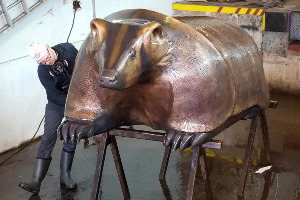
by Giovanni Tecuatl, age 14
Harry Whitehorse, a world renowned Native American, carver and painter, worked with wood, metals, paints and snow to make art. The Ho-Chunk artist and native of Black River Falls, Wisconsin is well known for his sculptures, statues, and murals around the world. Ten of his pieces are included in the Madison area.
Whitehorse died in December, 2017, at the age of 90. His final piece was a sculpture named “The Badger.“ “The Badger“ is a realistic representation of the Wisconsin state animal, which he made around 10 years ago. It will be replacing the current statue “Nails‘ Tales“ on Monroe Street across from Camp Randall on August 21. “Nails‘ Tales“ has suffered years of criticism for showing a figure of a corn or male anotomy on the ear of the statue. Hopefully “The Badger,“ which is a state symbol and the UW Madison’s mascot, will bring Madison pride, the same way it does for Deb Whitehorse, Harry’s wife.
Harry‘s philosophy regarding art was that he wanted people to touch his creations, instead of having them behind glass and out of reach. Students, football fans, and people who pass by will be able to touch the 10-foot-long statue’s claws, a pointed nose, and dark eyes. The texture of fur is made with shiny bronze, while the back is wide and almost flat. This will allow people to not only touch it, but also to sit on top of it and be able to take photos. Harry dreamed that people would love the statue forever.
[read more]
Ezekiel Gillespie was a civil rights activist that was known for his accomplishments and his big impact in the African American community in Wisconsin.
[read more...]
Have you ever heard of Belle Case La Follette? She was a woman who fought for the right to vote and was a strong leader for women's equality and peace.
[read more...]
Last summer, Tamara Thomsen, a maritime archaeologist for the Wisconsin Historical Society, and Mallory Dragt discovered a 15-foot-long dugout canoe in Wisconsin’s Lake Mendota. What sets it apart from other sunken boats is its age – the canoe was estimated to be 1,200 years old.
[read more...]
Most people know that there are ruins of ancient cities and towns all over the world. Even Wisconsin has them, and Aztalan is one of the most famous ancient sites in our state. Aztalan is also the largest historical site in Wisconsin.
[read more...]
It is challenging to think about what life was like a thousand years ago. However, how about thinking all the way back to 10,000 years ago, when Wisconsin Natives were constructing living areas, tools, and mounds.
[read more...]
There’s something about stories of shipwrecks that appeals to the adventurous spirit in all of us. Jerry Eliason and Kraig Smith are actual shipwreck hunters who uncover and investigate the many shipwrecks that have occurred in Lake Superior, one of the five Great Lakes, located on the northern edge of Wisconsin.
[read more...]
Although many people have a very loose definitions of a blizzard, the official classification requires the storm to last for longer than three hours with winds of at least 35 miles per hour.
[read more...]
The National Oceanographic and Atmospheric Administration (NOAA) named Lake Michigan’s Wisconsin Shipwreck Coast a National Maritime Sanctuary in 2021, six years after its nomination by local communities. A new addition to the National Marine Sanctuary System, Wisconsin’s Shipwreck Coast became the second sanctuary in the Great Lakes and third freshwater sanctuary.
[read more...]
Anyone who lives in the northern Midwest has experienced his or her fair share of snowstorms. These snowstorms though, do not compare to the Armistice Day Blizzard, one of the most devastating natural disasters in Wisconsin’s history.
[read more...]
The Peshtigo fire was a huge fire that destroyed the town of Peshtigo, Wisconsin on October 8, 1871. Although the fire is considered one of the deadliest fires in America history, somehow it is largely forgotten.
[read more...]
Donald Park in the southern part of Dane County is one of the most beloved natural areas in Wisconsin. But this beautiful place wouldn't be possible without the help of two visionary women, who not only donated the land but worked tirelessly to make it available to the public.
The women established the 800-acre park in 1993. It is not just a fun place to enjoy outdoor activities, but it also holds a lot of history and memories. Some ancient artifacts dated back 13,000 years ago, have been located at Donald Park.
[read more...]
On August 24th 1970, a bomb went off outside Sterling Hall at the University of Wisconsin-Madison. As a result of the attack, a university researcher was killed and others were injured. The cost of the bombing was 6 million dollars and years worth of research.
[read more...]
Joseph McCarthy was one of the most controversial politicians in American history. He served as a Republican Senator from Wisconsin, from when he was first elected in 1947 until his death in 1957. He is known for declaring that communist spies and sympathizers had penetrated the U.S. federal government and for launching anti-communist investigations that polarized the country.
[read more...]
Described as a “majestic” and “luminous” journalist, Lillian Parker Thomas Fox is one of many Black women who were pioneers in the field of journalism during the 19th century. Publishing her sharp and poignant writing across the Midwest, Fox aspired to direct “human thought forward.”
[read more...]
Cherokee Marsh is home to a variety of flora and fauna that thrive in this unique and significant ecosystem. The marsh is also a very important part of Dane County’s natural environment.
Trees are especially scarce in marshes. Instead, these wetlands boast an abundance of herbaceous plants. Common plants at Cherokee Marsh include cattails, sago pondweed, and hard stem bulrush. This site also supports several rare plant species such as glade mallow, white ladyslipper, and tufted bulrush. Many mammals, reptiles, birds, and amphibians live in the marsh.
[read more...]
Donald Park is a beautiful park that has many features. But perhaps the most stunning and eye-catching is the big rock across the road from the park. It is named Donald Rock, also known as Preacher’s Cap, and has been there for 450 million years.
[read more...]
The Tenney Park Lock and Dam is located on the eastern shore of Lake Mendota along Sherman Avenue. It is between the City of Madison’s Filene Park and Tenney Beach. It is the largest of three boat locks on the Yahara River.
[read more...]
When you think of Rosie the Riveter, the first image that likely comes to mind is a woman with her hair pulled back in a bandana, flexing her muscles, and saying “We Can Do It!” However, this version of Rosie the Riveter, painted by J. Howard Miller, was only on display for two weeks, and few people saw it at the time. On the other hand, Norman Rockwell’s version was printed on the cover of the May 1943 edition of the
Saturday Evening Post
and was seen and shared by millions.
[read more...]
The staff at Falk Elementary School and other community members have announced a proposal to rename the school in honor of the late Milele Chikasa Anana.
[read more...]
A Dane County land conservation group, Groundswell Conservancy, recently purchased 69 acres of wetlands in the Town of Dunn, south of McFarland.
[read more...]
Recreational fishing brings at least two-billion dollars to the Wisconsin economy each year. Much of this economic activity is due to the popularity of the walleye. This fish has a long history with Wisconsin and its people.
[read more...]
Located in Mazomanie, Wisconsin at the intersection of Highway F and Highway 19 is Dane County’s oldest rural elementary school: Halfway Prairie School. From 1844 to 1961, Halfway Prairie School operated as a one room schoolhouse. It was not until 1964 that it became a part of the county park.
[read more...]
Reggie White is one of the best professional football players in the history of the National Football League. Because he was also a passionate Christian, he was known in Wisconsin as the “Minister of Defense.” Reggie White was a committed and generous benefactor for his communities. He lifted up the reputation of the Green Bay Packers and helped create free agency as we know it today.
[read more...]
The Midwest, especially the state of Wisconsin, is covered with thousands of ancient effigy mounds. From ground level, these mounds usually just look like small hills, but they were actually created by Native Americans hundreds of years ago. Some of these mounds are over 1,500 years old and can be over 100 meters in diameter. These mounds are usually made in the shape of an animal or human. It is believed that they were often built at the base of hills in order for the entire mound to be seen during construction.
[read more...]
Harry Whitehorse, a world renowned Native American, carver and painter, worked with wood, metals, paints and snow to make art. The Ho-Chunk artist and native of Black River Falls, Wisconsin is well known for his sculptures, statues, and murals around the world. Ten of his pieces are included in the Madison area.
[read more...]
Outside of the Midwest, The Upper Peninsula is by all accounts a puzzle to a significant part of the U.S. populace. Shockingly, even to the absolute midwest, it is normal to imagine that the Upper Peninsula is a piece of Canada; and some of the time course readings do not have the foggiest idea what express the Upper Peninsula is in. The vast majority accept that the Upper Peninsula is bordered by water in other locations.
[read more...]
Society in the latter half of the 19th century held the rigid expectation that women limit their activities and aspirations to housework and raising a family. These expectations were present for, yet irrelevant to, Wisconsin’s most famous poet, Ella Wheeler Wilcox.
[read more...]
Things took a turn for the worse, however, when doctors noticed an irregular heartbeat during one of Slayton’s training sessions. They realized Slayton had atrial fibrillation, which did not affect his physical performance but made people in Washington nervous. Slayton was deemed unfit to fly just two years before his flight. He was pulled as an astronaut from Project Mercury and Slayton decided to return home to Wisconsin.
[read more...]
Have you ever been hiking in the Madison area and seen mounds in the ground? Do you know the significance of a mound to Wisconsin’s history?
[read more...]
Wisconsin housing rights champion, Vel Phillips, took on many firsts as a Black woman in Milwaukee.
[read more...]
Do you know the significance of both the city of Aztalan and the Mississippians in Wisconsin’s history?
[read more...]
What does Wisconsin have to do with the Civil War? It turns out, quite a bit.
[read more...]
After the Mississippians settled in Wisconsin, other groups of Indians began living in Wisconsin. Between 1000 AD and 1630 AD, a group of Indians that the archaeologists called Oneota lived along the Waupaca River. They were the ancestors of the Ho-Chunk and other Indian nations.
[read more...]
Being black in Wisconsin can be hard. African-Americans come across many challenges in life compared to other groups of people, who may or may not encounter the same type of events in the state.
[read more...]
Imagine having to campaign to keep commercial businesses from building over the cemetery your grandmother is buried in. This is a struggle that many Native Americans face today. Every day, they see their culture and what their ancestors built being taken away and destroyed.
[read more...]
The Edmund Fitzgerald was the largest ship that ever sank in the Great Lakes, and one of the most famous shipwrecks in the world. Many of the details about its sinking remain unknown.
[read more...]
Have you ever asked yourself: why are barns in Wisconsin painted red? Contrary to the myth that farms were painted red so that cows could find their way home, it turns out that this strategy is non-factual because cattle are colorblind to the colors red and green. It'll surprise many to hear that barns weren't even originally red.
[read more...]
About 11,000 years ago, a man died in what is now Nevada. The body was placed in a blanket and buried at a place called Spirit Cave.
Recent research and scientific discoveries, including new research at Spirit Cave, are changing what we know about prehistory.
[read more...]
Wisconsin got its nickname “The Badger State” before it became a state. In the 1800’s , Wisconsin was actually Native American land that contained a lot of lead.
[read more...]
The S.S. Edmund Fitzgerald was one of the largest ships to ever roam North America's Great Lakes. It is also one of the most famous, and is widely known for its mysterious disappearance. The Fitzgerald is the largest ship to sink on Lake Superior.
[read more...]
The Wisconsin Freedom of Information Council is suggesting several new requirements that the group says will strengthen Wisconsin’s open government rules, allow government bodies to operate with more transparency, and provide the public with better access to important information.
[read more...]
In 1942, a rumor spread around England that Hitler was planning to initiate an airdrop of weapons into the prison camps to bring back Nazi prisoners of war (POWs). Hearing the rumors, England became worried and asked America to house their prisoners. America reluctantly agreed and the Germans, Japanese and Koreans POWs were sent to work in America on empty supply ships known as Liberty Ships.
[read more...]
The McCarthy Youth & Conservation County Park is a spacious park in Cottage Grove that offers many activities for families and friends to enjoy. The park’s 285 acres of land features equestrian trails, hiking trails, camping sites, sledding hills, snowshoe trails, cross-country ski trails, picnic areas, and archery areas.
[read more...]
The University of Wisconsin-Madison's student-run newspaper, The Daily Cardinal celebrates its 125th birthday this year. Its first edition hit newsstands on April 4th, 1892. Today, The Cardinal continues to publish local and national news online and in print.
[read more...]
One hot day this summer, Deney, Sarah, Josepha, drove all the way from the Free Press newsroom off West Broadway to Appleton, Wisconsin, ready to learn about space and geology. We embarked on this journey to attend the annual Wisconsin Space Grant Conference, titled “Uncharted Lands: Geology and Space.” While we were in the city, we visited the Weis Earth Science Museum to learn about fossils, rocks, and minerals.
[read more...]
Ever since the redistricting maps of 2011, gerrymandering in Wisconsin has been in the political spotlight. Redistricting―redrawing voting district boundaries―is a regular occurrence in the United States. It’s intended to adjust political maps based on population and allow for fair elections. Unfortunately, it has been manipulated to further political agendas in an act called “gerrymandering.” Since the majority party draws the lines, redistricting is often used to suppress opposition and keep a certain party in power. However, an increasing number of voters and politicians are calling for reform of the redistricting process to create fairer voting districts.
[read more...]
Plum and Pilot Islands, two small islands off the Door County coast had been apparently fading into the background of local people's daily lives for decades. However, in 2007 with the creation of Friends of Plum and Pilot Islands, a non-profit formed by local citizens, the fortunes of the islands began to change.
[read more...]
The Midwest harbors many fascinating many mounds, burial sites, and historical landmarks - some are even located in Wisconsin.
[read more...]
When one thinks of a magician, one might imagine card tricks or a guy pulling a rabbit out of a hat. The famous Harry Houdini did more than that, however: he was an escape artist.
[read more...]
The Menominee people are some of Wisconsin’s oldest residents and have practiced sustained-yield forestry on their lands for hundreds of years. However, due to laws and treaties set by the United States, the Menominee have had to fight to regain control of their forests.
[read more...]
The Capital Times, founded by William T. Evjue, turns 100 years old this year. Current editor emeritus, Dave Zweifel, is proud of the newspaper’s long and rich history. In fact, Mr. Zweifel refers to The Capital Times as Madison's proudly radical newspaper.
[read more...]
The Ringling Brothers Circus was one of the best circuses ever, and it all began right in Baraboo, Wisconsin!
[read more...]
The Great Chicago Fire was a very devastating event in history. It killed many people and destroyed millions of dollars worth of property.
[read more...]
Simpson Street, the road on which Simpson Street Free Press was established, was once a corn field and the Royal Airport. The area around Antler’s Tavern—a beloved institution—has been through many challenges, but it’s always had a strong sense of community.
[read more...]
About 250 people died in the Great Chicago Fire of 1871. The famous, or infamous, Chicago Fire remains a sad and well-known chapter in American history. What many people don’t know is that up to 2,400 people died in a much larger but relatively unknown fire in northeast Wisconsin. The Peshtigo Fire was the deadliest fire in United States history. Both of these fires occurred on the tragic evening of October 8
, 1871.
[read more...]
A new exhibit recently opened to the public at Henry Vilas Zoo. The exhibit celebrates Wisconsin history and the creatures who are the face behind it all—badgers.
[read more...]
For years, science education has been an important part of the Simpson Street Free Press curriculum – so has museum trips. Recently, I joined other teen editors for a wonderful weekend in La Crosse, Wisconsin, where we attended the annual Wisconsin Space Grant Consortium Conference and the famous Pump House Regional Arts Center.
[read more...]
We met at our South Towne newsroom early one Wednesday morning—most of us with droopy eyes and tired faces. It was early, but we were excited for the day’s adventure: we were headed westward toward Mount Horeb to visit the village’s new Driftless Historium & Mount Horeb Area Historical Society.
[read more...]
In the 21st century, the world is at our fingertips. Smartphones provide the answers to any question imaginable in just a few seconds. These pocket-sized devices also allow users to connect with others almost anytime, anywhere. Yet while we may take them for granted, smartphones didn’t always exist: inventors worked through decades of design to bring us the modern phone we have today.
[read more...]
Back in the 1800s, many Irish people emigrated to Wisconsin. To this day, their descendants continue to live throughout the state and influence its culture.
[read more...]
The original model of the typewriter was finished in 1867. Christopher Latham Sholes and other inventors developed the typewriter in a small machine shop in Milwaukee, Wisconsin. After a few years of improvements, the world’s first practical typewriter was introduced in 1874.
[read more...]
We recently made a trip to downtown Madison. Simpson Street Free Press writers, Lucy Ji, Alex Lee, and Helen Zhang, visited the City-Council Building looking for another piece of local history. What we found was a little-known treasure that is both history and art.
[read more...]
|
|

